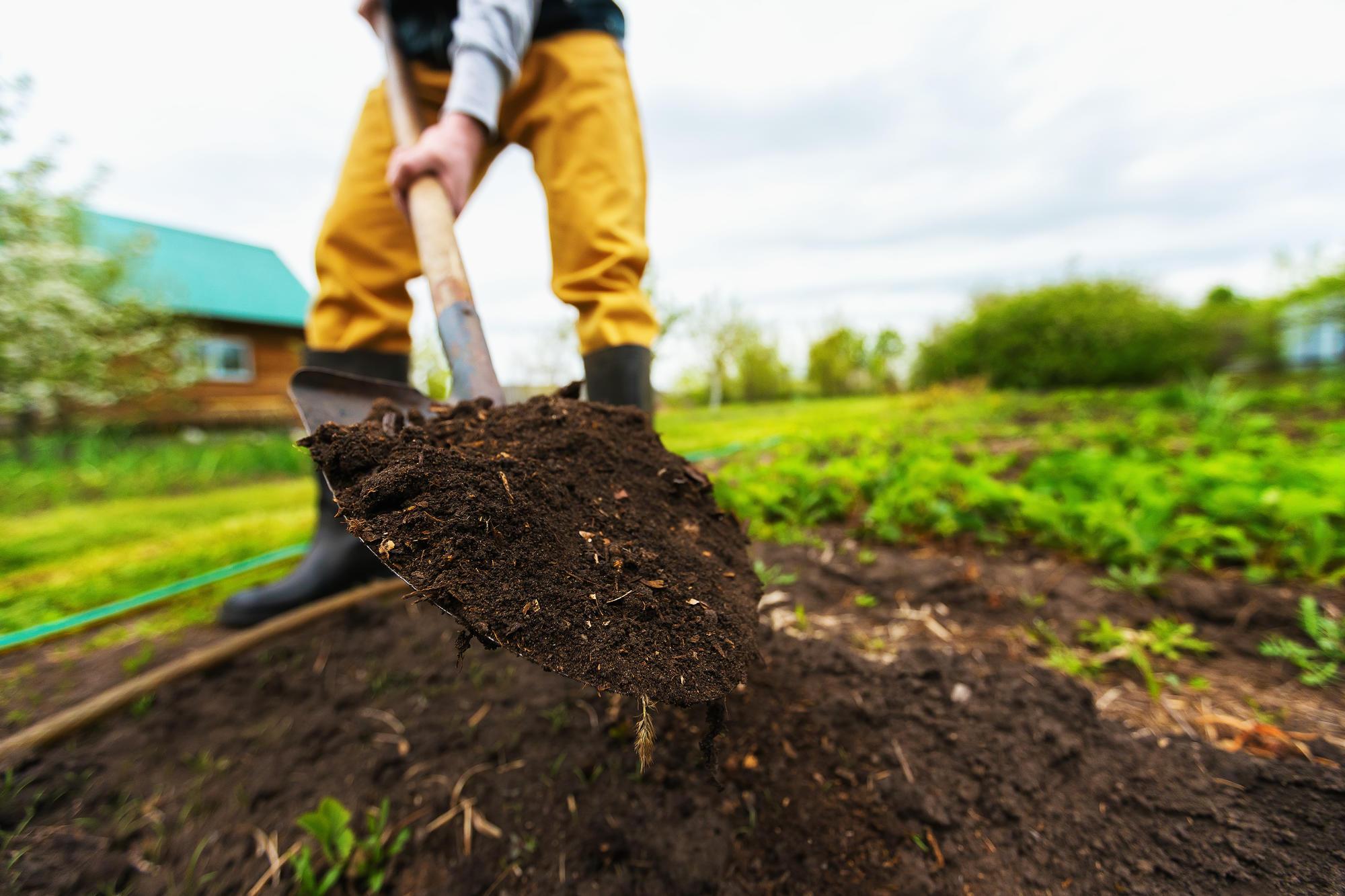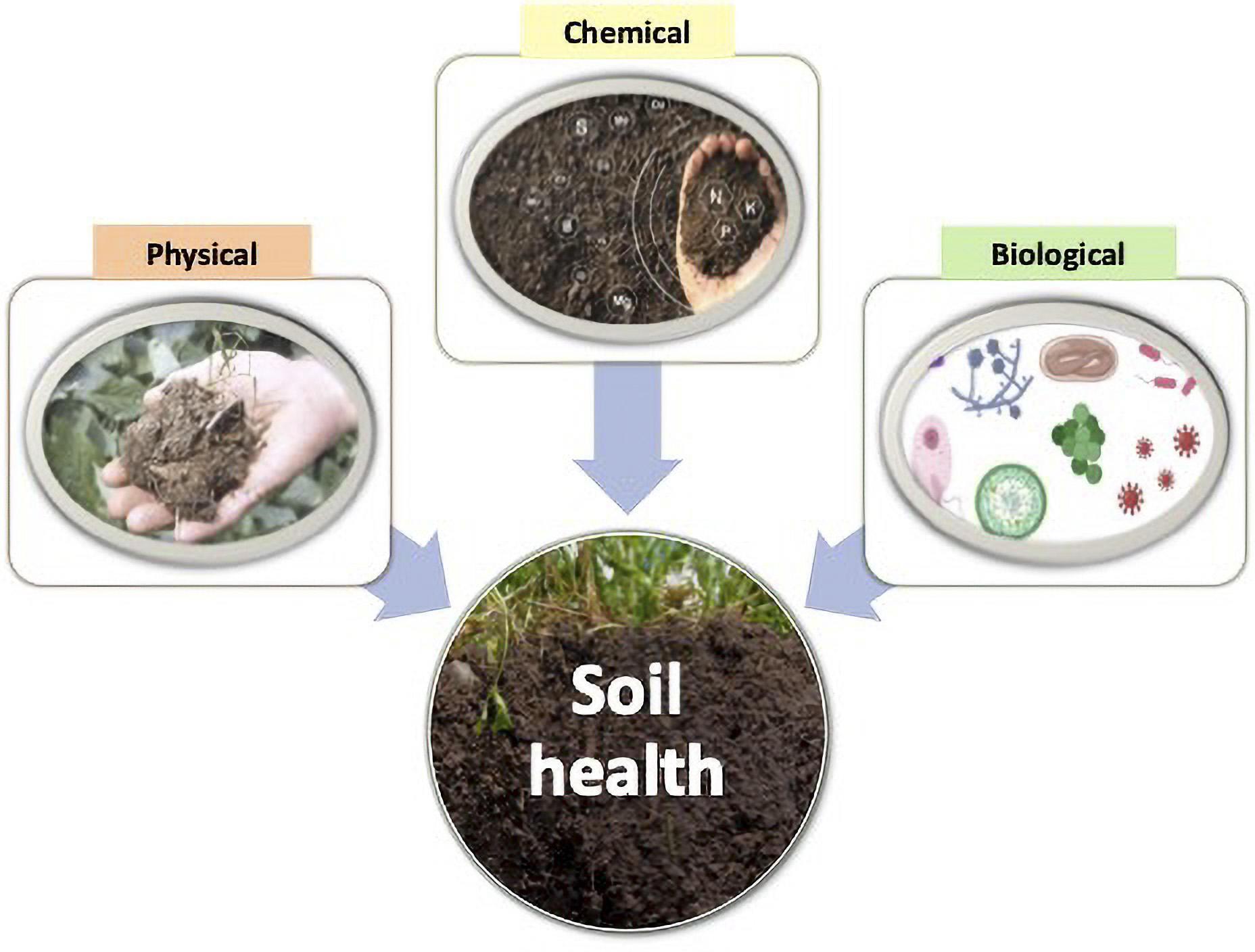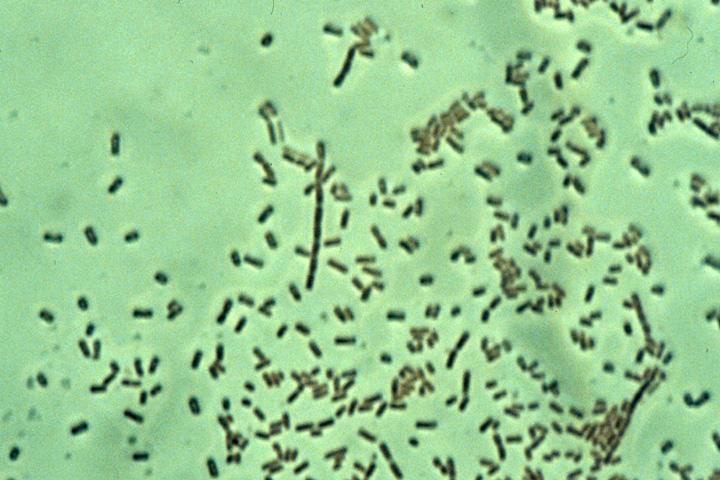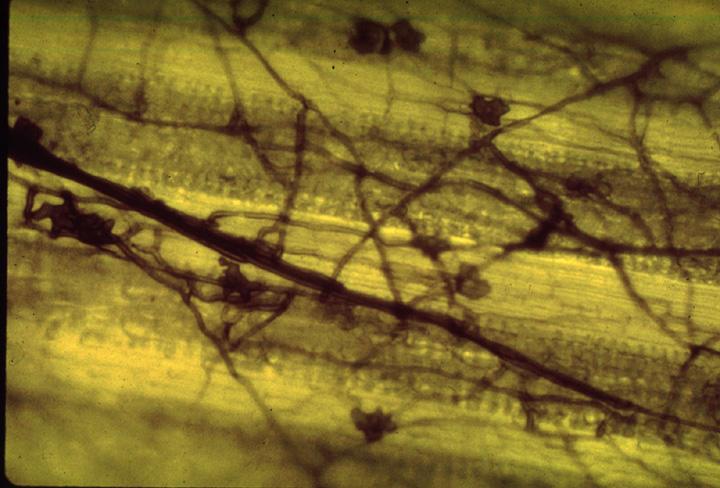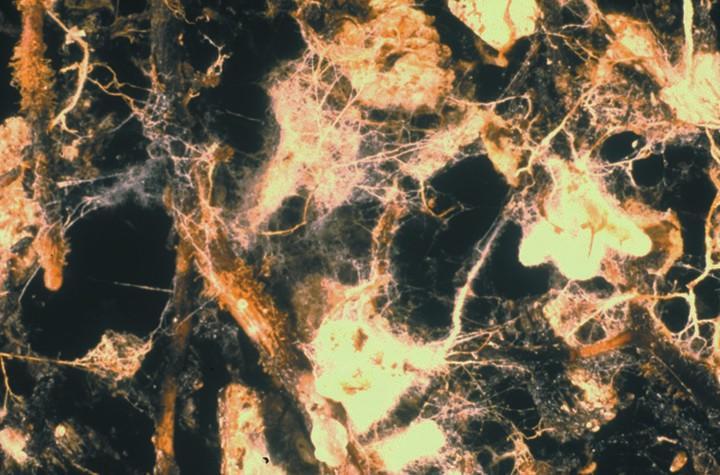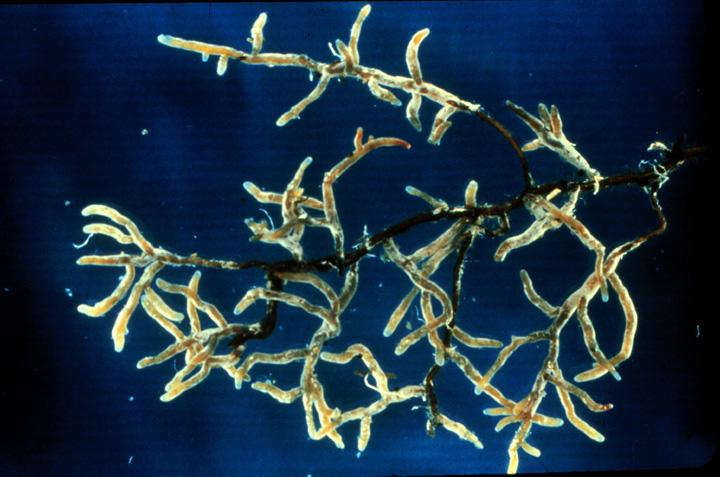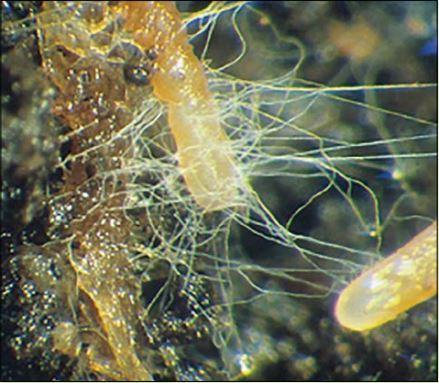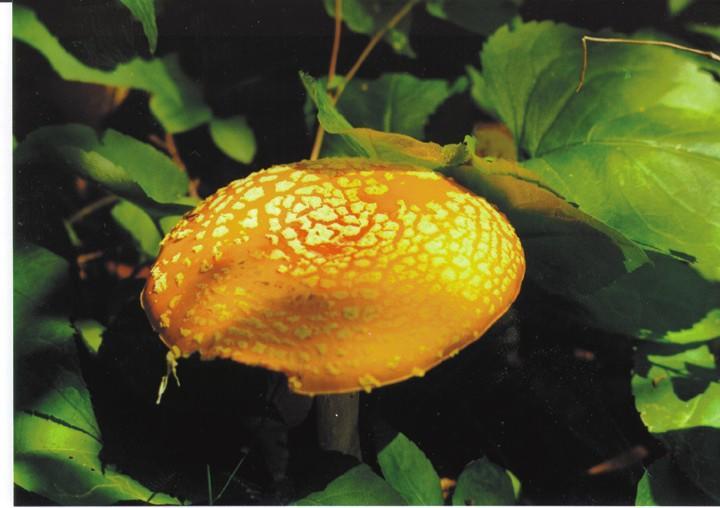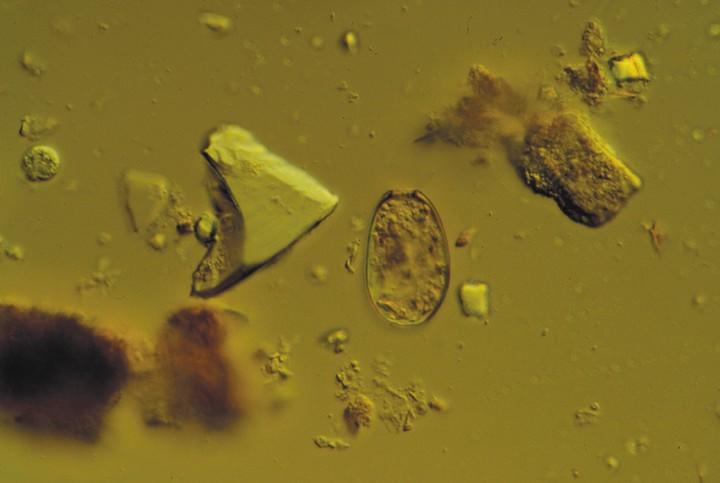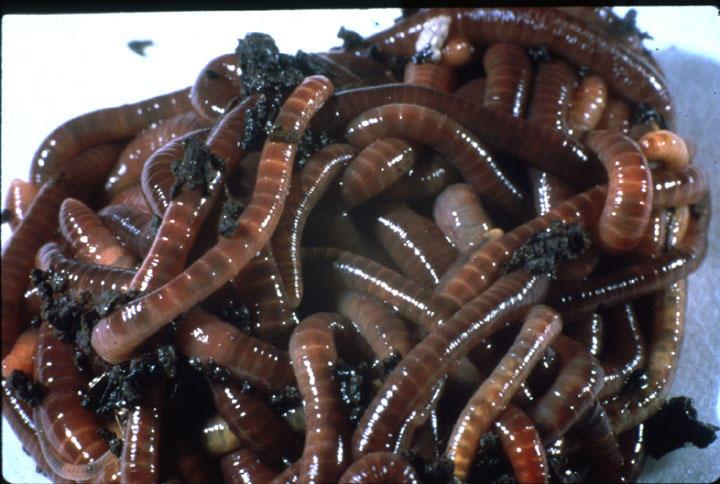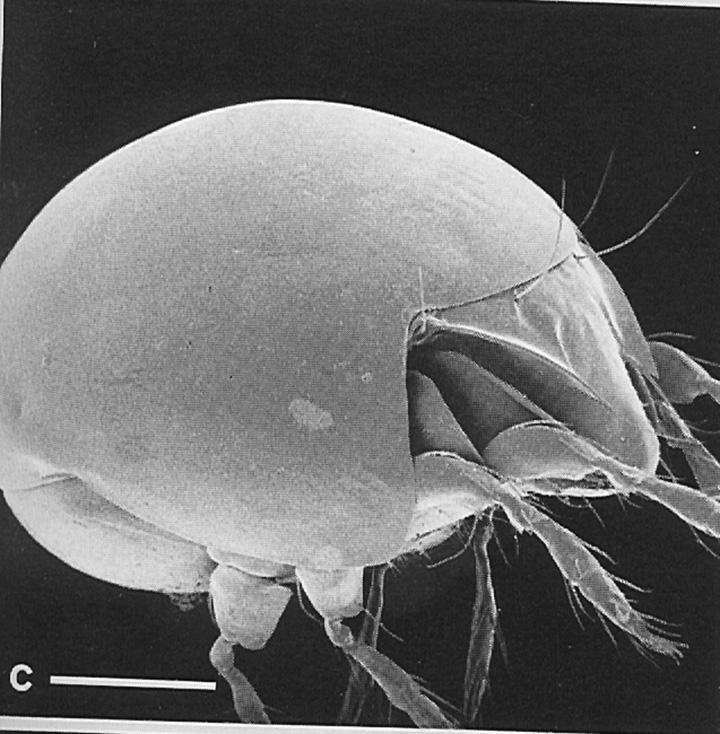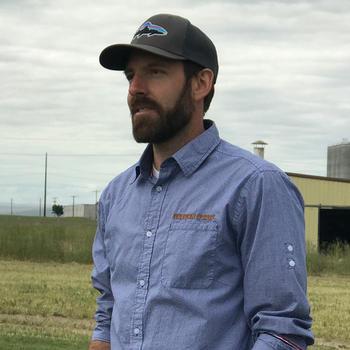Soil – a foundational resource
Together with sunlight, water and air, soils are the foundation of life on Earth. Soils link plants, the atmosphere, agriculture, food security, our health, the economy and the environment.
Federal soil management strategies in response to the 1930s Dust Bowl (Figure 1) largely focused on physical and chemical properties that reduce wind and water erosion.
Soil characteristics are the sum of physical, chemical and biological interactions in the soil as they are impacted by climate and management (Figure 2). The term soil biota refers to the microorganisms, soil-dwelling animals and plants that live all or part of their lives in the soil. Soil biota contributes to sustainable soils and ecosystem services. A diverse soil biota provides organic soil decomposition, nutrient cycling and carbon sequestration and determines the arrangement of sand, silt and clay in the soil.
This publication explores soil health by focusing on the activity, influence and management of soil biota.
Soil health indicators
Soil health indicators are measurable physical, chemical and biological properties that correspond to soil processes and functions. Soil health indicators must be identified according to specific local soil characteristics and environmental conditions.
Physical indicators of soil health
Texture, bulk density, porosity, soil structure and aggregate stability
Soil physical properties play a vital role in water movement, runoff and retention. Typically, soil organic matter and soil microbes influence these physical indicators. Likewise, soil air and water content determine microbial community makeup and activity. Root secretions, called exudates, cement soil particles together. They are sticky mucilages produced by most plants. They can also be byproducts of cellular decomposition. The aggregates formed influence how soils store and drain water.
- Soil texture is the percentage of sand, silt and clay making up the soil. It does not change in response to agricultural management practices or soil organic matter content.
- Bulk density is the mass of a given volume of a heterogeneous and often porous system. A soil with more void spaces — and thus better aeration and drainage — weighs less because more of its volume is empty space. Compacted soil or soil with fewer void spaces will weigh more per unit volume and will have reduced aeration and drainage. Densely compacted soils can hinder plant root growth. Bulk density may respond to agricultural management practices.
- Total soil porosity is the percentage of a soil volume that is not taken up by minerals or organic matter. Soil texture, bulk density and organic matter content determine total soil porosity and the capacity of soils to store water. Porosity responds to agricultural management practices.
- Soil structure is described by the shapes and sizes of aggregates or crumb structure. Structure influences soil drainage, water retention and aeration.
- Soil aggregate stability measures the soil’s resistance to mechanical stress. Soils with greater aggregate stability are more resistant to erosion by wind or water. Glues and mucilage — byproducts of microbial and plant metabolism — contribute to aggregate stability. Soil aggregation influences void spaces, aeration, drainage and nutrient retention and provides habitat for soil biota.
Chemical indicators of soil health
Soil pH, cation exchange capacity and available nutrients
Soil health is related to the soil’s capacity to provide nutrients for plant uptake and growth. Soil pH (how basic or acidic it is), cation exchange capacity (a measure of the soil’s ability to hold positively charged ions), and available nutrient levels are some chemical indicators of soil health.
- Soil pH impacts the availability of plant nutrients. Near a pH of 7 (neutral), nutrients become more available to roots. If the soil pH is too low (acidic) or too high (alkaline), plant nutrients become less available to plants. At extremes of pH, some plant nutrients become toxic to plants. Individual plant species vary in their tolerance to soil pH.
- Cation exchange capacity is the ability of soils to retain and release cationic (positively charged) plant nutrients, such as ammonium, calcium, magnesium and potassium. The negative charges of soils attract and hold the positively charged plant nutrients (cations) with enough force to prevent their leaching while allowing an easy exchange with plants. Sandy soils have a lower cation exchange capacity than clay soils. Adding organic matter increases the capacity of any soil to attract and retain positively charged plant nutrients. A soil with a higher cation exchange capacity can retain more nutrients for plant use.
- Soil organic matter influences nutrient retention in soils. Organic matter cycling by soil microorganisms transforms organically bound nutrients into forms available to plants.
Biological indicators of soil health
Soil microbial biomass, microbial diversity, microbial respiration and microbial enzymes
Soil biota is key to nutrient cycling and continued plant and microbial nutrition (Figure 2). In agricultural systems, management practices affect microbial activity.
- Soil microbial biomass (the total weight of fungi, bacteria, protozoa and other microbes) is an important biological indicator of soil health.
- Soils with diverse microbiology are more resilient to disturbance and stress, such as drought. These soils have the capacity to rebound toward their original state despite changes due to management practices and soil disturbance.
- Soil respiration is the rate at which soil microbes consume carbon structures and release carbon dioxide. It indicates biological and microbial activity, decomposition, microbial activity, decomposition and soil health.
- Microbial enzymes play a critical role in decomposing organic matter into plant-available nutrients. Lower enzyme activity indicates a reduced rate of decomposition and reduced plant-available nutrients.
- Soil organic matter is a key soil component and an indicator of soil health. Soil microbes feed on organic matter. Organic matter includes living and dead organisms in soils, dead and decaying plant material, root exudates, humus and simple and complex carbon-rich molecules. Soil organic matter influences all the physical, chemical and biological properties of soil.
- Other biological indicators of soil health include the ratio of soil fungi to soil bacteria, mycorrhizal abundance and composition, presence or absence of bacterial and fungal pathogens, and abundance of bacteria associated with the root zone.
Environmental changes and soil management practices like liming and tillage alter soil biota. These shifts can also result from climatic change, drought, extensive wildfires or changing rainfall patterns. Microbial activity and shifts in microbial communities are site- and context-specific soil health indicators. Thus, shifts in soil activity and community at a specific site are relevant. Comparisons between different sites are not.
Members of soil biota
Soil biota includes all living things in the soil. Some are easily seen with the naked eye, but others are not. Here are some of the soil community's principal members and their roles.
Bacteria: Bacteria are the most abundant soil microbes (Figure 3). These single-celled, mobile organisms thrive in thin water films surrounding soil particles and plant roots. They reproduce asexually. They are classified by shape, oxygen tolerance, food source and response to specific stains.
Bacteria have at least one of four roles:
- Decomposers: By releasing enzymes, these bacteria break organic matter into simpler compounds and make nutrients available to plants. These bacteria consume simple root exudates and more complex fresh plant residues. Decomposition promotes plant nutrient availability and environmental health.
- Mutualists: These bacteria work in partnership with plants. Each member of the partnership benefits from the relationship. For example, the nitrogen-fixing mutualist bacteria in legume roots provide the plant with nitrogen in exchange for shelter and sugars from the plant.
- Pathogens: Some bacteria cause plant disease. One example of pathogenic bacteria is Pseudomonas solanacearum, which causes bacterial wilt in potatoes.
- Lithotrophs (rock-eaters) or chemoautotrophs: These bacteria gain their energy from compounds of nitrogen, sulfur, hydrogen or iron instead of carbon compounds. They are active where there is little sunlight, such as deeper in the soil or in aquatic systems. Sulfur-oxidizing bacteria and methane-producing bacteria are two examples. Where oxygen is limited, they play an important role in plant nutrient cycling, nutrient availability and decomposition.
Actinobacteria: Like fungi, these bacteria grow hyphae (Figure 4). They are responsible for the earthy smell released by disturbed soils. Actinobacteria produce many antibiotics. They specialize in decomposing structural carbohydrates such as lignin, chitin, cellulose and other long-chain molecules that are difficult to decompose.
Fungi: Fungi are both unicellular and multicellular organisms. They are immobile and may undergo sexual or asexual reproduction. Fungi reproduce by spores — the equivalent of seeds in plants.
They produce threads called hyphae. In soils, hyphae grow between soil particles and around or into roots (Figure 5). They can be assigned at least one of four roles:
- Decomposers: Like actinomycetes, fungi break down complex structural carbohydrates such as lignin, chitin and cellulose.
- Biological controllers and regulators: Some fungi regulate diseases and pests. Fungal hyphae form mesh-like structures that contribute to soil aggregation and structure formation.
- Mutualists: Mycorrhizal fungi form symbiotic associations with plant roots and extend the functional reach of roots (Figure 6). These beneficial fungi concentrate scarce nutrients and water and transfer them to plants. In exchange, the mycorrhizal fungi receive plant root exudates as food. Mycorrhizal fungi may live on the outside of plant roots (Figure 7) or they may extend their hyphae into and between the cells of plant roots (Figure 8).
- Pathogens: Fungi cause many plant diseases of economic importance. For example, Fusarium solani causes wilts and rots in potatoes.
The common mushroom is the fruiting body of a much larger underground network of fungal biomass (Figure 9).
Protozoa: These single-celled organisms feed on dead and decaying microbes in the soil. They release plant-available nitrogen (Figure 10).
Nematodes: These cylindrical roundworms are abundant in soils. Many are predatory and feed on soil bacteria and fungi. Like protozoa, they also excrete plant-available nutrients (Figure 11). Some nematodes are plant pathogens or spread plant diseases.
Earthworms: These ecosystem engineers turn soils and increase soil fertility with their castings. Earthworms pull organic matter below the soil surface, where it becomes available to other decomposer organisms, and bring soil particles from deeper soil layers toward the surface. This activity may change the soil texture in the affected soil horizons. Their burrowing creates soil pores, which improve soil aeration and drainage and reduce soil compaction (Figure 12).
Arthropods: Spiders are the most familiar arthropods; some are soil-dwelling. In soil systems, arthropods, such as millipedes, centipedes, symphylan, springtails and mites (Figures 13, 14, 15, 16, 17 and 18), may be pests that feed on plants. However, they perform beneficial functions as well. They shred organic matter and make bacterial enzymes more efficient. They can stimulate the activity of other soil microbes. Their activity may enhance soil aggregation and water-holding capacity. Their burrowing mixes soils to increase porosity and reduce compaction. Arthropods feed on soil pests and reduce their populations.
The role of rhizospheric microbes in plant growth
The rhizosphere is a zone surrounding plant roots. Many microbes are present in the rhizosphere.
They are attracted to exudates secreted by plant roots that are a food source. They perform the following functions:
- Microbes living in the rhizosphere convert nutrients to plant-available forms.
- Some rhizospheric microbes chelate metals. Chelation is the bonding of ions and molecules with metal ions. Metal-containing chelates improve plant availability of metallic nutrients and can inhibit the action of plant pathogens.
- Microbes that live in the rhizosphere produce plant growth hormones that regulate cell division, cell growth and cell differentiation in plants.
- They convert mineral sources, including nitrogen, sulfur, carbon, phosphorus and metals, into water-soluble forms available to plants.
- They reduce environmental stress on plants, buffering against soil disturbance.
- Rhizosphere-dwelling microbes contribute to ecosystem stability and resilience to natural and human-caused disturbances. Maximizing the benefits of rhizospheric microbes may reduce the chemical inputs required for crop production.
Fostering microbes in the soil
Soil microbes play many roles in the ecosystem and impact crop productivity. Agricultural management impacts soil microbes. Sustainable farming practices improve the biological fertility of soils because they support diverse microbial populations. These diverse populations are more effective at converting essential nutrients into plant-available forms. Here are some other key points:
- A diverse microbial community can make the soil more resilient to environmental disturbance. However, higher diversity does not always mean better soil health. All plants support a unique set of soil microbes. Therefore, crop diversification is one way to support and diversify the soil microbial community. If circumstances disfavor one group of soil microbes, a diverse community is more likely to include other members that will step into the roles of the disfavored members.
- Crop rotation and intercropping with legumes or cover crop mixtures support greater soil microbial diversity. Annual intercrops rapidly produce root exudates that feed diverse soil communities.
- Reduced-tillage or no-till systems and increased organic matter inputs support microbial diversity. Organic matter additions become food for soil microbes. Reduced- and no-till systems protect soil fungi and larger biota, such as earthworms. They protect long-term carbon pools from consumption by other soil microbes.
- Chemical inputs may disrupt the soil microbial community. Greater soil organic matter and nutrient cycling and availability, better soil structure and aggregation and increased water retention contribute to plant resilience under drought stress. Such systems tend to remain more stable over time.
- Soil disturbance breaks down soil structure and microbial habitats. These habitats shelter microbes from predation and varying soil, water and air conditions. Soil disturbance introduces oxygen into the soil and increases microbial respiration of soil carbon. Soil disturbance discourages fungal growth.
- Mulching moderates soil temperature and moisture. It protects soil from solar energy and acts as a blanket to reduce water evaporation. As it decays, mulch becomes fodder for the soil microbial community, contributes plant nutrients and increases soil carbon storage.
- The rhizobacteria and mycorrhizal fungi that promote plant growth can be introduced by inoculation of soil or seed. Soil or foliar sprays can also introduce these fungi. Inoculum carriers like biochar can deliver beneficial microbes to the soil system.
The many features and functions of soil microbes influence soil health and promote plant growth. Shifting your practices to maintain and increase beneficial microorganism populations may promote more sustainable and productive cropping systems.
References:
Cardoso, E.J.B.N., R.L.F. Vasconcellos, D. Bini, M.Y.H. Miyauchi, C.A.D. Santos, P.R.L. Alves, A. M. de Paula, A.S. Nakatani, J. M. Pereira, and M. A. Nogueira. 2013. Soil health: looking for suitable indicators. What should be considered to assess the effects of use and management on soil health? Scientia Agricola 70(4), 274-289.
Chaparro, J.M., A.M. Sheflin, D.K. Manter and J.M. Vivanco. 2012. Manipulating the soil microbiome to increase soil health and plant fertility. Biology and Fertility of Soils 48(5), 489-499.
Collins, D., C.A. Miles, C.G. Cogger and R.T. Koenig. 2013. Soil fertility in organic systems: A guide for gardeners and small acreage farmers. PNW 656. Pullman, WA: Washington State University Extension Service.
DuPont, S.T. 2019. Soil Biota in Orchards. FS 315. Pullman, WA: Washington State University Extension Service.
DuPont, S.T., D. Granatstein and B. Sallato, B. 2020. Soil Health in Orchards. EM120. Pullman, WA: Washington State University Extension Service.
Duyck, G. L., B. Tuck, S. Kerr, S. Olson and E. Hammond, E. 2015. Soil Health Principles. EC 1647. Corvallis OR: Oregon State University Extension Service.
FAO, 2015. Status of the World’s Soil Resources (SWSR)–Main Report, vol. 650. Rome, Italy: Food and Agriculture Organization of the United Nations and Intergovernmental Technical Panel on Soils.
Fierer, N., S.A. Wood and C.P. Bueno de Mesquita. 2021. How microbes can, and cannot, be used to assess soil health. Soil Biology and Biochemistry 153: 108111.
Fierer, N. 2017. Embracing the unknown: Disentangling the complexities of the soil microbiome. Nature Reviews Microbiology 15(10), 579-590.
Hakim, S., T. Naqqash, M.S. Nawaz, I. Laraib, M.J. Siddique, R. Zia, M.S. Mirza and A. Imran. 2021. Rhizosphere engineering with plant growth-promoting microorganisms for agriculture and ecological sustainability. Frontiers in Sustainable Food Systems, 5, 617157.
Lowenfels, J., and W. Lewis. 2010. Teaming with Microbes: The Organic Gardener’s Guide to the Soil Food Web. Portland, OR: Timber Press.
Meena, V.S., P.K. Mishra, J.K. Bisht and A. Pattanayak, A. (Eds.). 2017. Agriculturally Important Microbes for Sustainable Agriculture: Volume 2: Applications in Crop Production and Protection. New York, NY: Springer.
Nielsen, M.N., A. Winding, S. Binnerup and B. M. Hansen, 2002. Microorganisms as indicators of soil health. NERI Technical Report No. 388. Roskilde, Denmark: Ministry of the Environment, National Environmental Research Institute
Singh, B. P., A.L. Cowie and K.Y. Chan. (Eds.). 2011. Soil Hhealth and Climate Change. Berlin and Heidelberg, Germany: Springer Berlin Heidelberg.
Sullivan, D.M., A.J. Moore and L.J. Brewer. 2019. Soil Organic Matter as a Soil Health Indicator: Sampling, Testing, and Interpretation. EM 9251. Corvallis, OR: Oregon State University Extension Service.
Tao, H., and C.W. Rogers. 2019. Understanding and Measuring Organic Matter in Soil. EM 118. Pullman, WA: Washington State University Extension Service.
USDA-NRCS. Soil Health Portal. Washington, D.C.: Natural Resources Conservation Service, U.S. Department of Agriculture.
